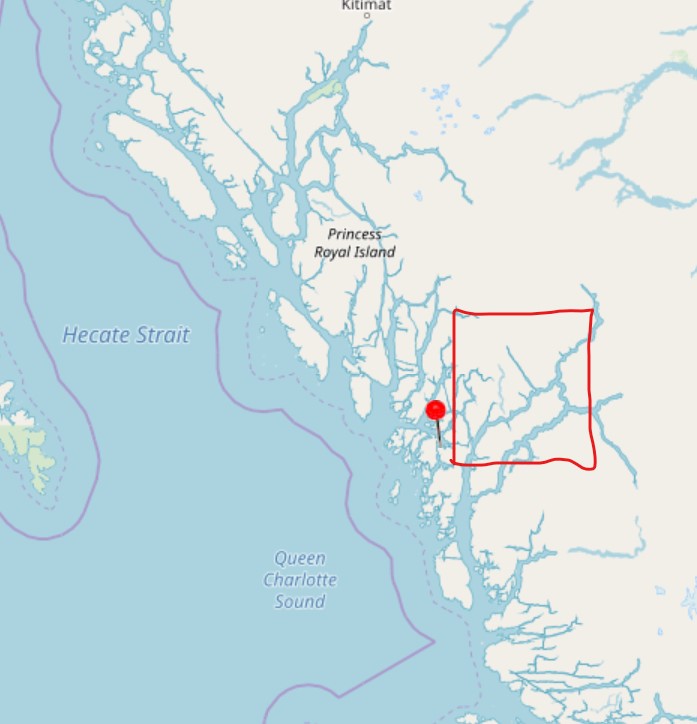The Central Coast of British Columbia, stretching from Cape Caution to McInnes lighthouse, is quite possibly our favorite cruising area in all of the Pacific Northwest. It’s a huge area that is often underestimated – while it’s possible to pass through it in 2-3 days (and many people do just that), it’s equally possible to spend 2-3 months happily cruising here. With hundreds of anchorages and dozens of passages, inlets and sounds, in some ways it feels like a larger cruising area than the San Juans, Gulf Islands and Desolation Sound combined.
For that reason we spent 4 weeks here, mid-May to mid-June, as it’s our turnaround point before heading south. The wonderful sunny, summer-like weather we had in the second half of May certainly had something to do with the great time we’ve had. At the end of May we had 80 F days and were wearing shorts and no shoes a lot of the time. While here we’ve seen five black bears, over the course of four separate occasions, and plenty of other wildlife – humpbacks, eagles, seals, etc.


It hasn’t been sunny all the time though – in early June it switched to about a week of near constant rain. This can be tough, as everything gets wet and we feel cabin-bound in the boat. But it’s something we know to expect in the early season, and I still think early season is the time to be here. We were here last year as well and loved it then too.
Following the R2AK (Race to Alaska)
We enjoy following the Race to Alaska via the tracker, and last year it worked out that we were on the Central Coast while some of the R2AK boats were sailing by. This year we were actually at Shearwater, which is even better because the boats are required to pass through nearby Lama Passage. The lead boats don’t usually stop into Shearwater unless they need an emergency repair, but we still were able to see three boats in Lama Passage when we were leaving. There was no wind so they were all rowing / pedaling / paddling.
We also had the excitement of seeing Givin The Horns come into dock at Shearwater because their rudder had broken in half. It was a disappointment for them because they were in second for a while, but I think they had a lot of fun meeting the boating community there. And they did an amazing job building a new rudder out of plywood in less than two days.

Givin The Horns coming in to dock at Shearwater for rudder repair
The next day we saw four more R2AK boats working their way up Fitz Hugh Sound. Another reason we love seeing R2AK boats is they’re the only other sailboats that are sailing with us. Although they represent less than 10% of the sailboats up here, they represent over 80% of the sailboats we’ve seen sailing (other than R2AK boats, only 3 out of ~50). They also show us the boundaries of what is possible (and barely sane), doing things that no other boats do, and in a way that no other sailboat race does.
New Anchorages
Since we had so much time on the Central Coast this year, we made an effort to visit new anchorages. We weren’t in a rush, and often only had 10-15 nm between anchorages, so were able to sail all the way usually (even if that took 4-5 hours). I already wrote about the four spectacular days we spent in Dean Channel, so I’ll just cover a few of the remaining ones we liked here.
Continue reading →

















